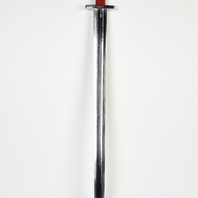
Viking Objects
Reproduction Viking Age Sword
A reproduction of the sword found in Grave 511 at Repton. The hilt is made of wood laths wrapped in tabby weave textile strips. The scabbard is made of two wooden laths, lined with trimmed sheep fleece, and covered in an oak-stained, stitched, calf-leather cover. The strap slide is copper alloy and inserted under the leather. The sword belt shown with the scabbard is based on the sword belt from Grave 511 at Repton.
Read More
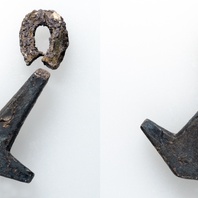
Viking Objects
Thor’s Hammer Pendant (1989-59/7224)
A silver hammer-shaped pendant found in Grave 511 at Repton. This is the grave of a man who appears to have died violently, taking a vicious cut to his loins. These may have been worn to show devotion to the god Thor, or to secure the god’s protection, although there is little evidence to support this interpretation. Pendants like this have been found made of lead, copper alloy, silver and gold, showing that many different strata of society could have worn them.
Read More
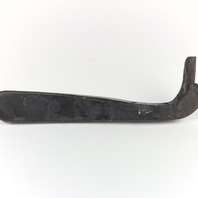
Viking Objects
Reproduction Iron Key
An iron key based on an original found in Grave 511 at Repton, Derbyshire. Iron keys were not only practical items but also symbols of status. Women were often given keys to the families chests of valuables. They also are often buried with keys, representing their authority in the household.
Read More
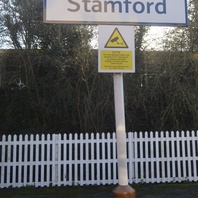
Viking Names
Stamford
Stamford, in the Ness Wapentake of Lincolnshire, is one of the Five Boroughs of the Danelaw. The place-name comes from the Old English elements stan ‘stone’ and ford ‘ford’. The town is located near a point where the River Welland was easily fordable throughout the year. In 913 The Great Heathen Army arrived in Stamford.
Read More

Viking Names
Torksey
Torksey, in the Lawress Wapentake of Lincolnshire, is a difficult name. The second element is Old English eg ‘an island, dry ground in fen, raised land in wet area’, but the first element, though apparently a personal name, is hard to interpret. The most plausible suggestion is that it is the Old English male personal name Turoc. The Anglo-Saxon Chronicle for the year 872 records that Her nam se here winter setle. æt Turces ige ‘And it [the Great Heathen Army] took winter-quarters at Torksey in Lindsey, and then the Mercians made peace with the host’. Recent excavations and other archaeological finds at Torksey are helping to build up our understanding of what that here was and what it did during the winter of 872-3.
Read More
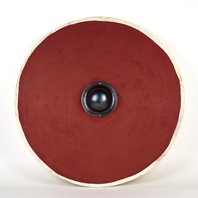
Viking Objects
Reproduction Shield
A reproduction shield based on examples from Gokstad and Trelleborg. The face is covered with linen, based on traces of linen found on the reverse of a shield boss at Cumwhitton, Cumbria. The rim was covered in wet, stretched rawhide which was allowed to shrink and dry in place. The iron, carinated boss is a type that is common on Viking Age sites in England and Scandinavia
Read More
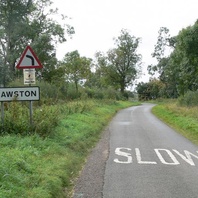
Viking Names
Slawston
Slawston, in the Gartree Hundred of Leicestershire, is an Anglo-Scandinavian hybrid from the Old Norse male personal name Slagr (Middle English genitive singular Slages), which appears to be originally a byname either from slœgr ‘sly, cunning’ or, less likely, from slagr ‘a blow, a stroke’ and the Old English element tun ‘farm, settlement’. This village might have been an Anglian settlement that was appropriated by a Scandinavian from the Viking army which disbanded in the area around 877 rather than a later manorial creation. Slawston is near Blaston, another township with a hybrid Old English/Old Norse place-name which could represent a similar appropriation.
